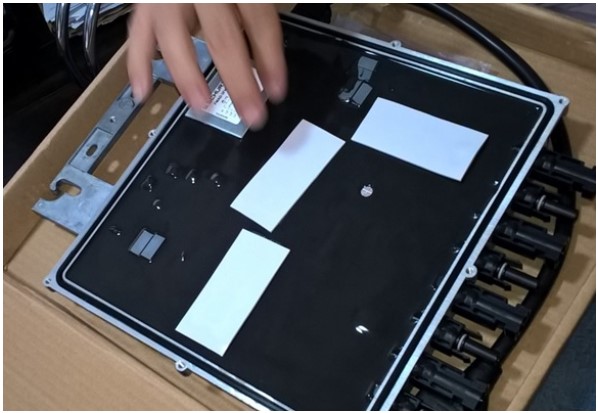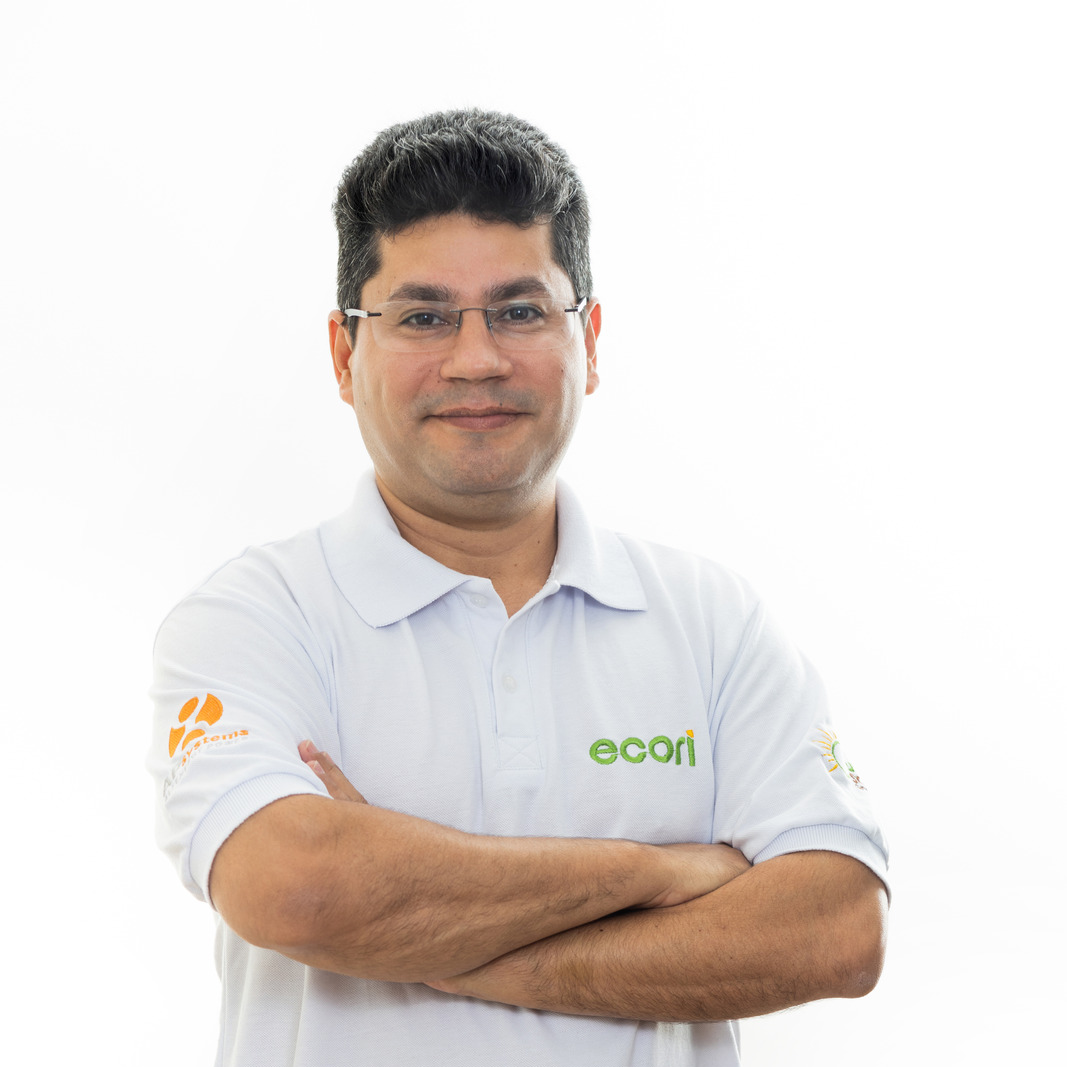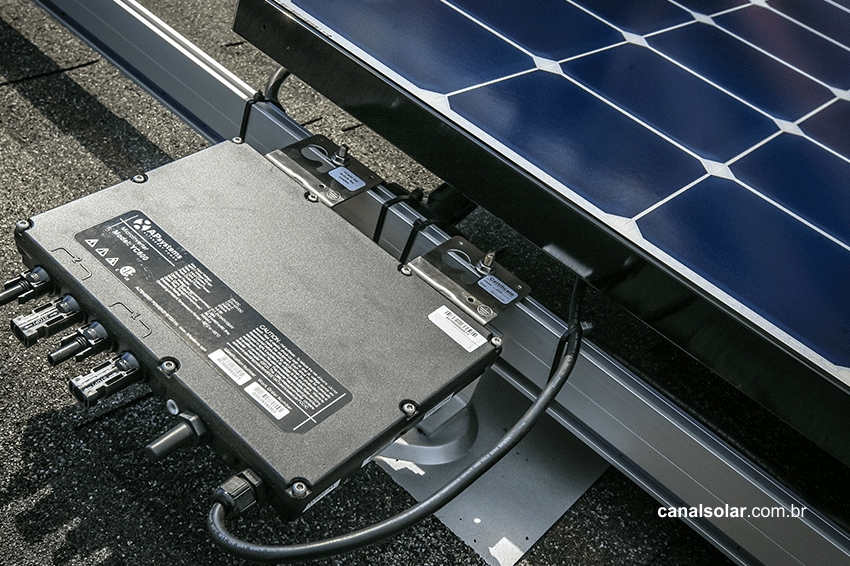The objective of this article is to comment on some characteristics of microinverters for grid-connected photovoltaic systems (grid tie) found on the market.
Are all microinverters the same?
The answer is no. In the Brazilian market we have seen many brands that appear and then disappear.
Some products return with different names and there are also those that return with the same name, however, distributed by another company. Given this scenario, we will list some facts that can guide the decision to choose the microinverter.
Presence of potting
Potting is the process of filling the equipment box with a solid or gelatinous compound. This process provides the equipment with several qualities, such as greater resistance to shocks and vibrations, protection of boards and electronic circuits against humidity or corrosive agents, better heat dissipation, resistance to high temperatures, electrical insulation and waterproofing.
If the microinverter you intend to purchase does not have potting, the useful life of the equipment will certainly be greatly reduced.

In microinverters with potting There is no need for forced ventilation (with a fan), which contributes to increasing the useful life of the equipment and gives the product important characteristics.
In addition to potting, it must also be checked whether the microinverter encapsulation has an IP67 degree of protection, which is recommended for this type of equipment.
The fact that the microinverters are sealed with potting and having a high degree of protection makes them ideal for applications in some environments where salt spray occurs (sea spray), classified areas (explosive atmosphere), environments with ammonia concentration (farms), etc.
Below, we have a list of places that can become potentially explosive or that offer conditions for reducing the useful life of traditional inverters. In these locations, the microinverter is the best solution for photovoltaic systems.
- Environments subject to gas and vapor leaks: gas stations, gas distributors, hospitals, sewage treatment plants, dealership galleries;
- Environments subject to the penetration of fibers and dust: textile industries, paper and cellulose industries, cereal processors, food industries, pharmaceutical industries, coal processors, timber companies, breweries, mills.
Adaptation to different secondary distribution networks
In Brazil, there are several secondary distribution network standards with different nominal voltages. Eight of them are officially recognized by ANEEL (National Electric Energy Agency) [1]:
- 208/120V, 220/110V, 220/127V, 230/115V, 240/120V, 254/127V, 380/220V, 440/220V
A great advantage of some microinverters is their ability to operate on both 127/220V and 220/380V networks without the need to use a transformer.
The APSystems YC-500 model, for example, operates in all secondary distribution networks recognized by ANEEL.
Microinverters are usually single-phase, but can also be found in a three-phase version, such as the YC-1000 model from APsystems, which is the only three-phase product on the Brazilian market with power below 10 kVW and also the only truly three-phase microinverter in the world.
This characteristic is very important, for example, for buildings with three-phase electrical installation whose owners prefer to initially install a small system, foreseeing future expansion.
Given the various types of networks (single-phase, two-phase and three-phase), it is always good to have a product available that meets a large number of existing voltage levels.
Otherwise, you will have to manage multiple suppliers and train teams on multiple types of products with different features.

Remote parameter adjustment and data storage
Eventually, it will be necessary to make parameter adjustments depending on the network to which the inverter will be connected. Furthermore, unfortunately, some concessionaires practice requesting specific reconnection times, although the equipment is already within the limit established by ANEEL and tested by laboratories certified by INMETRO.
Making these and other adjustments remotely, without the need for technical staff to travel, is a competitive advantage that some microinverter brands can offer.
It is also important that the microinverter stores generation data, preventing the loss of information in cases of power outages or the lack of an internet provider. Unforeseen events happen, but it is good that the photovoltaic system has ways of storing and presenting its generation information when everything returns to normal.

Worldwide presence, warranty and support
Check if the microinverter you want to use has already been tested in the main world markets. It is important to check how this product is evaluated in the most consolidated and demanding markets. It is also important to check whether the equipment is used in countries with similar climatic conditions to Brazil. Even if the microinverter already has a presence in the local market, it is always good to know how the product is seen abroad and how it performs. If the product is already present on the local market, try to get to know the manufacturer and distributor, especially in terms of warranty and after-sales assistance. Check the comments of those who have already installed the product. Make a comparison of technical and commercial characteristics. Just as one of the criteria for classifying photovoltaic modules is their bankability, with inverters it is not much different. In other words, the product must offer a long useful life, with a failure rate close to zero, maximizing the return on investment and reducing the operating costs of the photovoltaic system. Warranties for microinverters in consolidated and more demanding markets are generally 25 years. In Brazil, warranties are defined by manufacturers or distributors. The average warranty for photovoltaic inverters in the Brazilian market is not that high, it is around 4 to 7 years. APsystems microinverters, for example, are offered on the Brazilian market with a standard 15-year warranty, which can be extended to up to 25 years, in order to follow the expected useful life of the photovoltaic modules.
References
[1] Nominal Voltages
















One Response
Unlike the text, the simple fact of receiving potting does not characterize equipment as explosion-proof, this depends on its Ex classification.